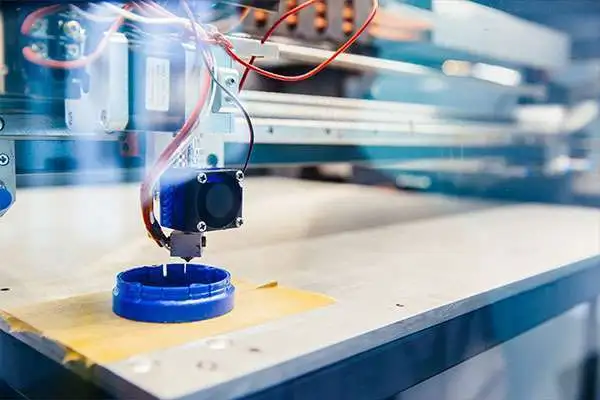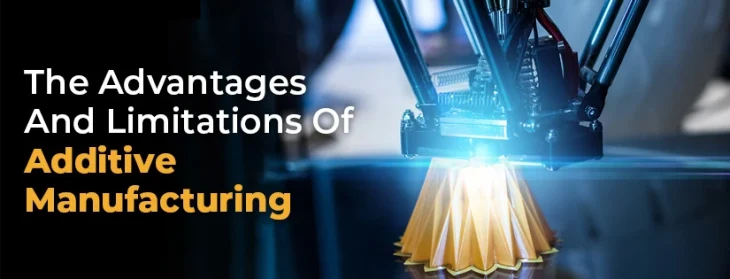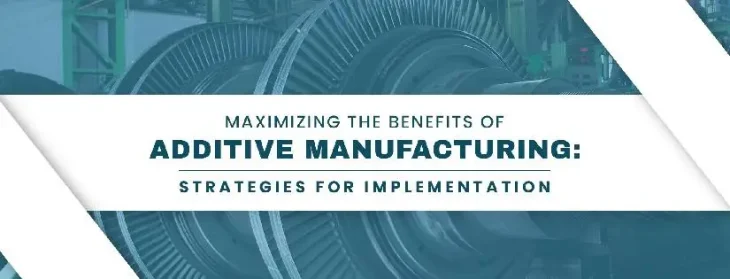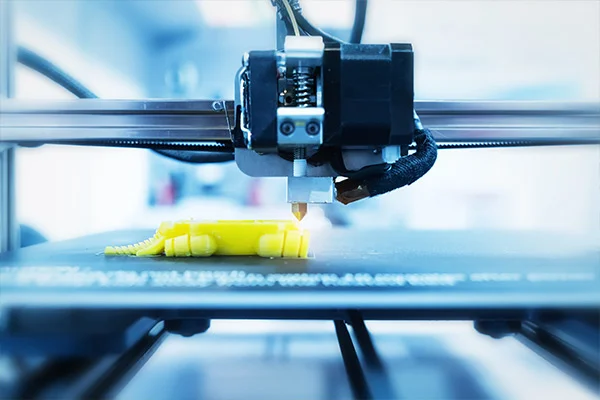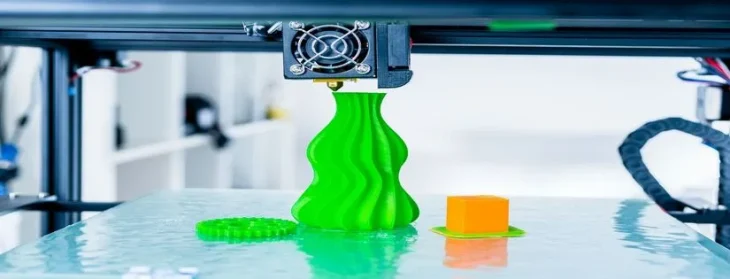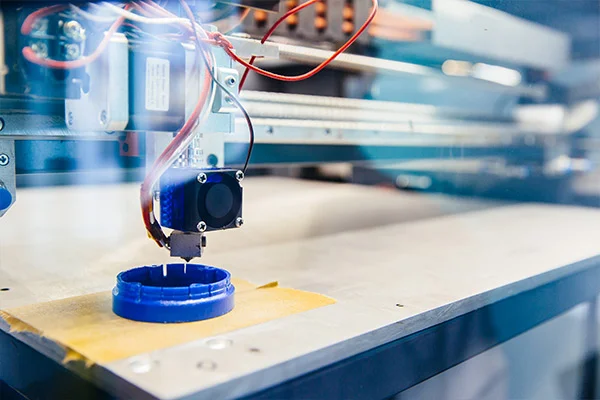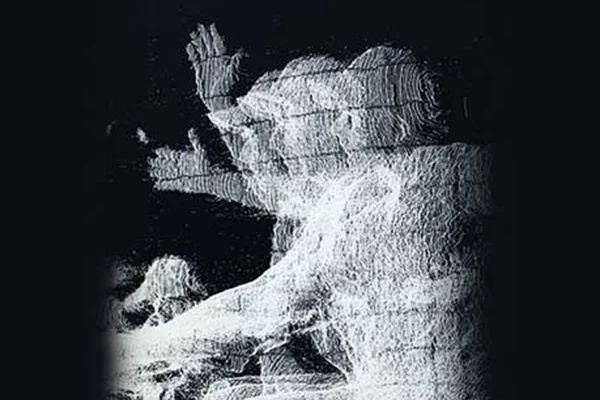Designing For Additive Manufacturing: Best Practices For Successful Product Development
Table of content Top 8 Best Practices For Successful Product Development Conclusion Top 8 Best Practices For Successful Product Development 1. Start with a thorough understanding of the technology Additive manufacturing has changed how complex parts are made, making it possible to make structures that were once impossible to make. But if you want to make good designs for 3D printing, you need to know how the technology works.For example, you need to know about the build volume, resolution and precision of each 3D printing technology and choose the right materials for your design. Also, you need to think about how the parts will be positioned and held up during the printing process. By thinking about these things, you can make designs that work well with the technology and use all of its features. 2. Optimise parts for the build process Putting together a 3D printer might come with its challenges, which you should think about. For example, you have to think about how the pieces are set up on the build plate to make sure they are supported well when printing. 3. Reduce material usage 3D printing is better than traditional ways of making things in a lot of ways, like being able to use less material. By designing parts to use less material, you can make products that are more environmentally friendly and make less waste. One way to do this is to build with lattices, which are strong but use less material. Putting these structures into designs can help make parts that are light but strong, useful, and long-lasting. 4. Consider post-processing requirements When a 3D print is finished, it may need to be cleaned or finished. It is called “post-processing”. Keep these needs in mind when you’re designing, since they could make the production process take longer and cost more. By making parts that are easy to clean and polish, you can save time and money during post-processing. Also, if components are designed with as few support structures as possible, they may need less post-processing. 5. Optimise for material properties When designing parts for 3D printing, you need to think about how the materials work. During the printing process, for example, some materials may be more likely to bend or change shape, while others may be more likely to break or crack. If the designs work well with the properties of the chosen material, the parts will be strong and useful. 6. Use design software that supports 3D printing A key part of the DFAM process is the use of design software. If you use software made just for 3D printing, you can make designs that work best with the technology. These software tools can help you find problems, like places that might need more support, and give you ideas on how to fix them. 7. Incorporate tolerances Tolerances are the allowed differences from a given dimension that designers must take into account when making things for additive manufacturing. Since the accuracy and precision of 3D printing processes vary, planning with tolerance in mind may help avoid problems like pieces that are too tight or too loose. Tolerances in the design can also help make sure that the pieces fit together right and work as planned. 8. Collaborate with experienced 3D printing partners Working with people who have already used 3D printing can help you make your designs better. These partners can tell you important things about what you can and can’t do with 3D printing technology. They can also show you ways to make your printing more effective and efficient. 9. Test and lterate Testing and iterating are important parts of making a good product, and they are even more important when designing for additive manufacturing. Because 3D printing technologies are always changing, it’s important to keep up with the latest changes and to keep testing and improving designs. With 3D printing, prototypes can be changed and tested quickly, so design flaws can be found and fixed quickly before the product goes into production. Conclusion To design for additive manufacturing, you have to change the way you think about things. When designing for efficient and effective production, 3D printing’s unique strengths and weaknesses must be taken into account. By following the best practices in this article, you can make sure that their parts are good for 3D printing. This will lead to faster production, less material waste and more environmentally friendly products.If you want to elevate your additive manufacturing processes and stay ahead in the competitive market, Prescient Technologies can be your go-to partner. With our state-of-the-art software development services, we can help you get revolutionary results and improve how you use 3D printing and other “additive manufacturing” techniques.Get in touch with us today and take your product development to the next level. References: Alpha Bigrep Radius
Read MoreThe Advantages And Limitations Of Additive Manufacturing: A Comprehensive Overview
Table of content Top 6 Advantages of Additive Manufacturing: Top 6 Limitations of Additive Manufacturing Conclusion In the last few years, 3D printing and additive manufacturing have enhanced the scope of production. 3D printing is the process of putting layers of material together to make things that are three-dimensional. This technology is better than the old ways of making things in a lot of ways, but it comes with its own set of limitations. Here, we’ll look more closely at the top six pros and cons of additive manufacturing. Top 6 Advantages of Additive Manufacturing: 1.Reduced Time and Cost One benefit of additive manufacturing is that it makes production faster and cheaper. Usually, when making a new product, you start by making a prototype, then the tools, and finally the finished product. This process could take a long time and cost a lot of money. But additive manufacturing makes the process go faster. 2.Complex Geometries With additive printing, you can make things that would be hard to make in any other way. Additive manufacturing can be used to make structures with hollow channels inside and curved surfaces.3 3.Customization and Personalization Additive manufacturing makes it possible to change and personalize products. In traditional manufacturing, the same product is made over and over again, and there is no way to change it. Customers can use additive manufacturing to make one-of-a-kind items with their own specs, sizes, and shapes. 4.Reduced Material Waste If additive manufacturing is used, there may be less need to throw away materials. With traditional ways of making things, like subtractive manufacturing, a lot of materials are wasted. In additive manufacturing, just the right amount of material is used. This cuts down on waste and saves money on materials. 5.Faster Prototyping One more benefit of additive manufacturing is that prototyping can be done more quickly. When standard production methods are used, prototyping can take a long time and cost a lot of money. Additive manufacturing can be used to make prototypes quickly and cheaply. You can easily change designs, try out new materials and shapes, and repeat the process. This makes it easier and cheaper to get products to market faster. 6.Simplified Supply Chains Since additive manufacturing makes it possible to make things only when they are needed, supply chains may be easier to run. Instead of making a lot of the same thing and storing it in warehouses, additive manufacturing lets people make things as they need them. This might make people need less storage space and be less likely to keep things they don’t need. Top 6 Limitations of Additive Manufacturing: 1.Limited Materials One problem with additive manufacturing is that it can only print with a certain number of materials at one time. Even though the number of materials is growing, it is still very small compared to conventional methods. This limitation could affect how well the final product works, how long it lasts, and how well it lasts. 2.Surface Quality A glaring limitation of additive manufacturing is that the surface quality of the parts is still not very good. Especially, when complex structures are made, a smooth surface finish is difficult to achieve. 3.Size Limitations With additive manufacturing, the size of objects may be limited. How big an item is depends on how big the printer is and how much room it has to work with. Larger things may need to be printed in parts before they can be put together. This will take time and make the process harder. 4.Complexity Limitations Using additive manufacturing, you can make buildings with complex shapes, but the shapes can only be complicated. Complex designs can be hard to make because they often need more support structures or post-processing steps, which take more time and money. 5.Limited Scale Another problem with additive manufacturing is that it can only make small quantities. Additive manufacturing is great for making small batches of goods, but it’s not ready yet to make a lot of things at once. This is because additive manufacturing is a slow method that might take a long time to make a lot of parts. 6.Environmental Impact When you use additive printing, it might be hard to get rid of things like support structures and failed prints. Also, if the materials used in additive manufacturing are not recycled or thrown away in the right way, they could hurt the environment. Conclusion In conclusion, additive manufacturing is faster, cheaper, more flexible, and wastes less material. It does, however, have a number of flaws, including a paucity of materials, poor surface quality, small size, and complexity issues. Despite these problems, additive manufacturing is an important part of the manufacturing industry and will continue to change and improve over time. Do you want to go to the next level with additive manufacturing? We can help you at Prescient Technologies. Our software development services could change the way you think about 3D printing and other methods of “additive manufacturing.” References:
Read MoreMaximizing the Benefits Of Additive Manufacturing: Strategies For Implementation
Table of content Top 8 Strategies For Implementation Conclusion Want to change the way you make things and take your business to the next level? AM, or additive manufacturing, might be what you need. AM has the power to change your production processes because it can use digital designs to make 3D objects. It creates shorter lead times, lower costs, a better design, and less material waste. But how do you ensure that your business gets the most out of AM? Don’t worry, these top 8 strategies for implementation will help you out. Top 8 Strategies For Implementation 1. Assessing Your Business Needs First, you need to figure out what your business needs. On top of that, you need to figure out how AM could be used and what it could do for you. You will also need to look at how you make things now to see where AM can be used and where it might not be the best fit. Once you know exactly what you want, it is time to choose the right technology. 2. Selecting the Right Technology To get the results you want, you need to choose the right AM technology. With so many choices, it is important to look at the pros and cons of each technology before making a decision. Cost, speed, accuracy, and the right material can be the things to think about. By working with AM service providers who have a lot of experience, you can make smart choices about the technology to use. 3. Designing for Additive Manufacturing To get the most out of AM, parts must also be designed to work best with it. You will need to use the best methods for making parts to do this. It means picking materials that use less material and needs less post-processing. Do not forget that the freedom to design is one of the most exciting things about AM. Making shapes with complex geometries was impossible with traditional manufacturing. 4. Overcoming Implementation Challenges Putting AM into place is not always easy, and problems can come up. From high costs to following quality and rules, many things could go wrong. You should have a thorough implementation plan and work with experienced AM service providers. Put money into training and developing your workforce. With this, you can get past any problems and use AM to its fullest potential. 5. Training and Workforce Development To get the most out of AM, it is important to invest in the knowledge and skills of your staff. Creating a skilled workforce requires a lot of training and opportunities. If you don’t know where to start, it is better to work with experienced AM service providers. They can train your team on what they need to know and how to do it. 6. Scaling Up and Maximizing ROI After you have added AM to your manufacturing process, it’s time to get the most out of it. One great way to do this is to make more of them. Some ways to scale and maximize ROI are to invest in automation and improve your production processes. You should also use data and analytics. You can get the most out of AM and take your business to the next level by always making your approach better. 7. Establishing Quality Control Measures You don’t want to leave the quality of your AM-produced parts to chance. That is why it’s crucial to establish a robust quality control process. After all, your reputation is on the line, and you don’t want to risk producing faulty or substandard parts. By maintaining strict quality control, you can ensure that all parts meet the necessary standards. Trust us; it is worth the investment. By prioritizing quality control, you can cut the risk of defects, reduce waste, and produce consistent, high-quality parts that meet your customers’ expectations. 8. Continuous Improvement and Innovation Don’t get complacent once you’ve implemented AM in your business. Embrace a mindset of continuous improvement and innovation to stay ahead of the game. Always strive to improve your processes and technology and gather feedback from your team and customers. Explore new and creative ways to optimize and innovate. By staying ahead of the game, you can keep a competitive edge and unlock the full potential of AM. Stay on the lookout for emerging AM technologies, materials, and techniques. In short, stay in the loop with the latest trends and innovations. This way, you can future-proof your business and be ready for whatever challenges and opportunities lie ahead. Conclusion Get ready to experience the benefits of additive manufacturing (AM) in your business. But before you dive into it, it is important to plan carefully and take a few steps to ensure success. Start by selecting the right technology for your business needs and designing for AM. Overcome any challenges that may arise during the implementation process. Don’t forget to invest in your workforce and train them in AM technologies to develop a culture of innovation. Once AM is integrated into your business, you can explore ways to scale up production and maximize your return on investment. References:
Read MoreHow Artificial Intelligence and 3D Printing can collaborate
Artificial Intelligence 3D Printing Machine Learning Applications of AI in 3D printing AI and 3D printing has been a hot tech for sometime and ever since their inception, these two domains has climbed steadfastly on the global market ladder. The 2019-20 global automation market size has displayed this rise. It is obvious that these two domain would cross paths sometime and strike up a beneficial collaboration. The intersection of AI and 3D printing has long been predicted. AI can analyze a 3D model and determine which parts will fail to form the part. 3D printers can also remove material from failed regions and use AI to create a different version. AI can even analyze a part’s geometry and identify a potential problem so an alternative way to create it can be found. The end result? A better-designed part with a high rate of success. Artificial Intelligence The merging of artificial intelligence and 3D printing is an evolution of manufacturing paradigms. Prosthetics design, for instance, is one of the most important applications of 3D printing. As technology advances, artificial intelligence and 3D printers can be used to control 3D printers and increase the number of compatible materials for the process. By combining these two technologies, manufacturers can create new and improved products and production processes. Artificial intelligence and 3D printing will eventually help humans create better prosthetics. The advancement of 3D printing has made it possible to create complex objects without the need for a human. Despite the complexity of the manufacturing process, AI can help to improve the process. The combination of AI and 3D printers will also create new applications. Here are some applications that will benefit from the convergence of these technologies. Once this technology becomes more widespread, it will revolutionize the manufacturing industry. It could even be used to create new prosthetic limbs that can be used for surgery. 3D Printing AI and 3D printing are often associated, but it can also be used to create better products and objects. By automating processes, AI can help eliminate human error and enhance 3D printing performance. The fusion of AI and 3D printing has a number of benefits for manufacturing and quality control. It also helps accelerate the rise of Industry 4.0 and the Industrial Internet of Things. But which use cases will AI have in manufacturing? What are some examples of where AI is already being applied to 3D printing? Machine learning, or AI, is a technology that can analyze a data stream and find hidden relationships. For instance, in the 3D printing process, artificial intelligence helps maintain the material properties of complex alloys, such as titanium, carbon, and other metals. The resulting models can be used for predictive maintenance. Machine learning can even help manufacturers improve spare parts and predict when to replace them. This is an exciting development for manufacturers and researchers alike. Machine Learning Bioprinting, also known as 3D bioprinting, is an emerging field in which machine learning is being used to improve the process of making organoids. This technique involves constructing a scaffold with a specific design to support cell growth and function. The complexity of the scaffold can have a big impact on the printed organ’s function. For this reason, scaffolds should be designed carefully and precisely to optimize the process. Using machine learning in 3-D bioprinting can help detect defects, such as incorrectly positioned cells, curved layers, and microstructure errors. It can also monitor the entire bioprinting process and identify problems before they arise. One such example is shown in Figure 4, which uses CNN to detect defects during the bioprinting process. In this example, images from high-quality cameras during the bioprinting process are input data for the CNN, which analyzes the images to determine whether they are defects. Applications of AI in 3D printing AI has a number of advantages when it comes to 3D printing, including the ability to analyze an object before starting the process, and to predict the quality of the part. The use of machine learning algorithms also improves the fixation process and reduces manufacturing waste. Some projects are even aiming for zero-waste additive manufacturing. AI can also be used to protect important data about the printing process, such as reducing the number of errors. A recent example of an application of machine learning in 3D printing is automated monitoring of 3D printed parts. By integrating image processing and camera data, supervised machine learning algorithms can detect defects during the printing process and help companies fix them without human intervention. The technology can also help companies cut the cost of reprinting parts if they have to fix a problem. Another cost-saving application of artificial intelligence in 3D printing is the guarantee of high- precision prints. A project developed by the University of Southern California has been designed to ensure that parts produced by 3D printing processes meet high-quality standards. The possibilities for AI and 3D printing to collaborate are endless. We’ve seen how they can work together to create a prosthetic hand, and we believe that as these technologies continue to develop, the potential value they can provide each other will only increase.
Read MoreAdditive Manufacturing the rise of metals in 3D printing
Table of content Plastic as the basis for 3D printing Metal as the basis of 3D printing Additive manufacturing is one of the advanced techniques of Industry 4.0 that can manufacture industrial products faster and more precisely as compared to traditional manufacturing processes. Also known as 3D printing, it is a technique that works by turning a digital model of an object into a three-dimensional physical item by adding printable materials layer by layer on its digital design. It helps create complex geometrical patterns that are not possible with traditional manufacturing methods, designing and making lighter components, and controlling various material properties such as density and stiffness. 3D printing has gained popularity rapidly, involving minor prototype construction, fewer dies, and less post-processing. The aerospace and defense industry is experiencing large-scale use of 3D printing with French company Thales Group started a global center of expertise in additive manufacturing in Morocco in 2017. Boeing created its first 3D printed metal satellite antenna for the Israeli company Spacecom in 2019. Airbus used the technology to manufacture the titanium 3D printed bracket on an in series production A350 XWB commercial aircraft in 2017 and has since announced plans to develop 3D printed drones. Plastic as the basis for 3D printing Stereolithography (SLA): SLA is the first 3D printing technology ever used. It hardens a liquid resin using an ultraviolet beam, bonding each successive layer. Despite its antiquity, this technology is still widely used mainly due to a few advantages such as detail resolution, surface quality, and tight tolerances. It is used for UV-sensitive epoxy resins and ceramic-reinforced materials (NanoTool, BlueStone, CeraMax). This technique is widely used for coupling tests, dimensional verification, ergonomic studies, and wind tunnel aerodynamics tests due to its high detail resolution. Fused filament fabrication (FFF): In this process, melted thermoplastic material such as plastic, wax, or metal is sprayed from a nozzle to create many layers, each of which are bonded to the other. The bonding is done mainly by heat or adhesion. The most popular metals used here are nylon, high-density polyethylene, polycaprolactone, polycarbonate, and low melting point metals. Due to its affordability, FFF is a commonly used process for rapid prototyping parts with standard tolerances. Selective laser sintering (SLS): SLS involves hardening and bonding tiny seeds of plastic into layers in a three-dimensional structure using a laser. The powder is jet sprayed from multiple nozzles on the print area, and then the laser fuses or sinters the powder layer by layer. Based on the requirement, SLS printed objects are commonly made with plastic materials, such as nylon or any other powdered material. One of the main benefits of this technique is that, unlike many other 3D printing technologies, SLS doesn’t require much tooling once an object is printed.Unlike stereolithography, SLS doesn’t need additional supports to clasp a thing while it is being printed. Electron beam melting (EBM): Like SLS, EBM is a process that requires high energy high temperature, just that it uses an electron beam as its power source. In this, a tungsten filament in the electron beam gun is superheated to create a cloud of electrons that accelerate to approximately one-half the speed of light. A magnetic field focuses the beam to the desired diameter, while the second magnetic field directs the beam of electrons to the desired spot on the print bed. Currently, EBM is required mainly for producing refractory and reactive metals (titanium, niobium, zirconium, tantalum, etc.) and their alloys. EBM is great for melting and refining metals and alloys in water-cooled copper molds under a high vacuum. Laminated object manufacturing (LOM): Introduced by Cubic Technologies (formerly Helisys Inc.), LOM is a quick and comparatively cheaper method of 3D printing objects in various materials such as metals, plastics, or paper. It binds sheets in successive layers then cuts into the desired according to the 3D CAD model. It is a prototype-centric technique and is not used for production. Metal as the basis of 3D printing While 3D printing started by using mainly plastic as the base material, metal additive manufacturing technologies are currently the most significant growth area for additive manufacturing and include: Selective laser melting (SLM): A laser is used to melt successive layers of metallic powder until completely melted. The machine then adds additional layers of powder over the melted layer until the object is built. The aerospace and medical devices industries have witnessed the maximum use of this technology, as the manufacturing in those industries involves complex parts that can be simplified using this process. This technology was discovered in 1995 by the German research institute Fraunhofer Institute ITL. Direct Metal Laser Sintering (DMLS): Developed jointly by Rapid Product Innovations (RPI) and EOS GmbH, this technique is like SLM. The main difference is the degree to which the particles are melted. In DMLS, the particles are not completely melted. Also, the 3D printer parts are developed from excellent Aluminium or Titanium powder. Laser metal disposition (LMD): Laser Metal Disposition is also called directed energy deposition (DED). In this, a laser beam melts the metallic object and creates a pool into which the powder is fed. The powder then melts to form a deposit, and the required geometry is achieved layer by layer. The powder emitting laser and nozzle are controlled using a motion- centric system or robotic arm. This technology has been rapidly gaining traction in industries such as aerospace, tooling, transportation, and oil and gas. Electron beam melting (EBM): Originally patented and developed by the Swedish company Arcam, EBM differs from other techniques as it uses an electron beam as a power source instead of a laser to 3D print metal. The beam fully melts down the metal powder layer by layer in a high vacuum while retaining the original characteristics of the material. The technique can manufacture metal parts with 100% density and is also helpful for industries with complex components such as aerospace and medical implants.
Read MoreAdditive Manufacturing: The past and the prominence of 3D Printing
Additive Manufacturing is one of the most significant reforms in a fast-changing world of manufacturing and construction. Additive manufacturing has triggered newer processes, sustainable output, smart machines, and more unique means of operation, management, and increased efficiency. Additive manufacturing is a computer-operated and controlled system that creates three-dimensional objects by carefully sequentially depositing various material compositions in layers. A comprehensive digital layout is fed as design data, and the machine operates accordingly. Additive manufacturing is mainly used for making rapid prototypes and forging complex geometric objects. The other names for Additive Manufacturing are 3D printing, Additive Layer Manufacturing. The technology has gained worldwide prominence with the name of 3D printing. FAQ Commercialization of 3D printers 3D printing is not an archaic process, but rather, it came up in the ’80s. Here is a summary of the history of 3D printers in the last four decades: The 80’s witnessed the first commercial use of additive manufacturing with stereolithography from 3D Systems. The SLA-1 was the first commercially released AM machine. Acrylate resins were commercialized. The Somos stereolithography machine also entered the market in the same year. In the ’90s, Germany’s Electro-Optical Systems sells the first stereolithography system. Fused deposition modeling (FDM), solid ground curing (SGC), and laminated object manufacturing (LOM) were commercialized. Selective laser sintering (SLS) and Soliform stereolithography system were also commercialized. This year saw a bunch of new additives manufacturing systems such as ModelMaker, Solid Center, or EOSINT. An inkjet printing mechanism that deposited wax materials layer by layer was also introduced. The late 2000s saw a rapid growth of the 3D printing machine market. The 3D printing Industry witnessed massive investment 2000’s saw the emergence of new technologies. The world got its first commercially available multi-color 3D printer. The Electron Beam melting machine was one of the groundbreaking 3D printing machines introduced in the early 2000s. In March 2015, Exerial was introduced, a large machine with multiple stations to enable continuous production. Early 3D printers were not very light and convenient to handle. Only after the advent of the 21st century have they become more affordable, straightforward, easy to operate, and versatile enough to be used in a wide range of operations ranging from tools & component manufacture, electronics, metalwork, polymers, etc., product prototypes. Past three years, there has been a tendency to employ 3D printing and AM tech in the real estate industry. Current 3D Printing market trends The worldwide 3D printing products and services market valued at around 12.6 billion U.S. dollars in 2020. The industry is expected to grow at a compound annual growth rate of some 17 percent between 2020 and 2023. As more businesses begin to have their printers, printing software will grow faster than printing services. We can see how fast Additive manufacturing emerged within just three decades and how it is relevant across multiple industrial verticals today. Whether it is about building prototypes, constructing affordable housing, or producing components, AM and 3D printing have offered effective systems that triumph over traditional methods. This technology enables faster product development and market entry, smoother product customization, and seamless integration at lesser cost and time. Thus, additive manufacturing provides OEM manufacturers an excellent opportunity to unleash their products at a higher rate at much lesser expenses for great returns and better customer benefits while ensuring sustainability. Reference: 1. Wohlers, T. and Gornet, T., (2016). History of additive manufacturing, Wohlers Report 2016. 2. Global 3D printing products and services market size from 2020 to 2026, Statista
Read MorePoint Clouds | Point cloud formats and issues
Table of content Different 3D point cloud file formats Challenges with point cloud data Whether working on a renovation project or making information data about an as-built situation, it is understandable that the amount of time and energy spent analyzing the object/project can be pretty debilitating. Technical literature over the years has come up with several methods to make a precise approach. But inarguably, the most prominent method is the application of Point Clouds. 3D scanners gather point measurements from real-world objects or photos for a point cloud that can be translated to a 3D mesh or CAD model. But what is a Point Cloud? A standard definition of point clouds would be – A point cloud collection of data points defined by a given coordinates system. In a 3D coordinates system, for example, a point cloud may determine the shape of some real or created physical system. Point clouds are used to create 3D meshes and other models used in 3D modeling for various fields, including medical imaging, architecture, 3D printing, manufacturing, 3D gaming, and various virtual reality (VR) applications. When taken together, a point is identified by three coordinates that correlate to a precise point in space relative to the end of origin. Different 3D point cloud file formats Scanning a space or an object and bringing it into designated software lets us manipulate the scans further, and stitch them together, which can be exported to be converted into a 3D model. Now there are numerous file formats for 3D modeling. Different scanners yield raw data in different formats. One needs other processing software for such files, and each & every software has its exporting capabilities. Most software systems are designed to receive a large number of file formats and have flexible export options. This section will walk you through some known and commonly used file formats. Securing the data in these common formats enables using different software for processing without approaching a third-party converter. Standard point cloud file formatsOBJ: It is a simple data format that only represents 3D geometry, color, and texture. And this format has been adopted by a wide range of 3D graphics applications. It is commonly ASCII (American Standard Code for Information Interchange). ASCII is a rooted language based on a binary that conveys information using text. Standard ASCII represents each character as a 7-bit binary number. In reverse engineering, characters are the focus of data. E57: E57 is a compact and widely used open, vendor-neutral file format for point clouds, and it can also be used to store images and data produced by laser scanners and other 3D imaging systems. Its compact, binary-based format combines the speed and accessibility of ASCII with the precision and accuracy of binary. E57 files can also represent normals, colors, and scalar field intensity. However, E57 is not universally compatible across all software platforms. PLY: The full form of PLY is the polygon file format. PLY was built to store 3D data. It uses lists of nominally flat polygons to represent objects. The aim is to store a more significant number of physical elements. It makes the file format capable of representing transparency, color, texture, coordinates, and data confidence values. It is found in ASCII and binary versions. PTS, PTX & XYZ: These three formats are familiar and compatible with most BIM software. It conveys data in lines of text. They can be easily converted and manipulated. PCG, RCS & RCP: These three formats were developed by Autodesk to meet their software suite’s demands. RCS and RCP are relatively newer. Binary point cloud file formats are better than ASCII or repurposed file types. It is because the latter is more universal and has better long-term storage capabilities. However, this type of format can be used to create a backup of the original data. If you need to convert binary point cloud files to ASCII, back up your binary files before reformatting them. This way, you can restore your data if something goes wrong. Challenges with point cloud data In reverse engineering, you may encounter several Point Cloud issues. The laser scanning procedure has catapulted product design technology to new heights. 3D data capturing system has come a long way, and we can see where it’s headed. As more and more professionals and end users are using new devices, the scanner market is rising at a quick pace. But along with a positive market change, handling and controlling the data available becomes a vital issue. These problems can result in poor quality point cloud data. Read on to learn more about five key challenges professionals working with point cloud face are: Data Quality: You must identify the quality issues in reverse engineering point cloud data. Reconstruction algorithms differ in their behavior based on the properties of point clouds. Many studies have classified the properties of point clouds by their effect on algorithms. The quality of point clouds affects the precision of the reconstructions. Point clouds produced by body scanners typically contain many duplicated and overlapping patches. These features cause a large amount of noise and redundancy in the final data. Reconstruction of free-form surfaces requires the use of clean-up meshes. This data must be transformed into a model that is consistent and accurate. Fortunately, this task is possible with the help of cloud-to-cloud alignment tools. Data Format: New devices out there in the market yield back data in a new form. Often, one needs to bring together data in different formats from different devices against a compatible software tool. It presents a not-so-easy situation. Identifying the wrong point cloud file format in reverse engineering is of great importance. Often when a company attempts to perform reverse engineering, it will be presented with a point cloud file in the wrong format. It can cause problems because the data is not in the correct format. EMPA has made it their business to work with point clouds as soon as possible. However, this doesn’t mean that you should give up
Read More